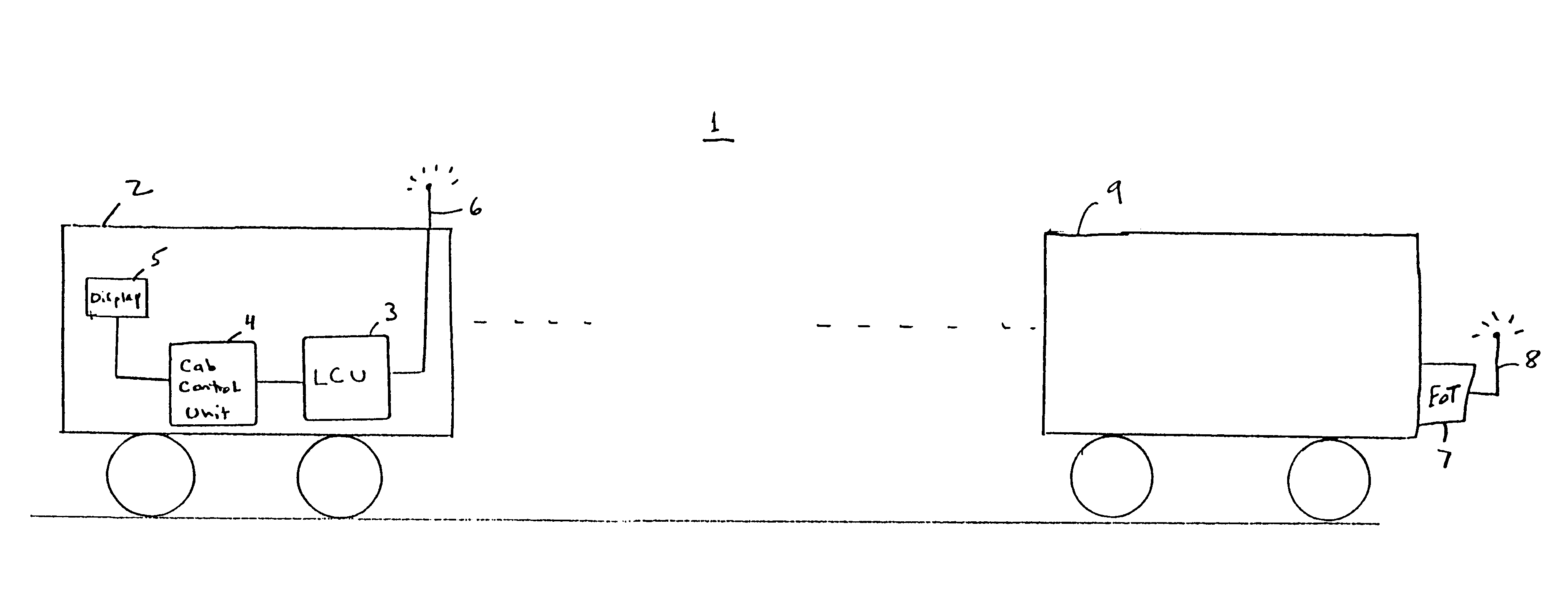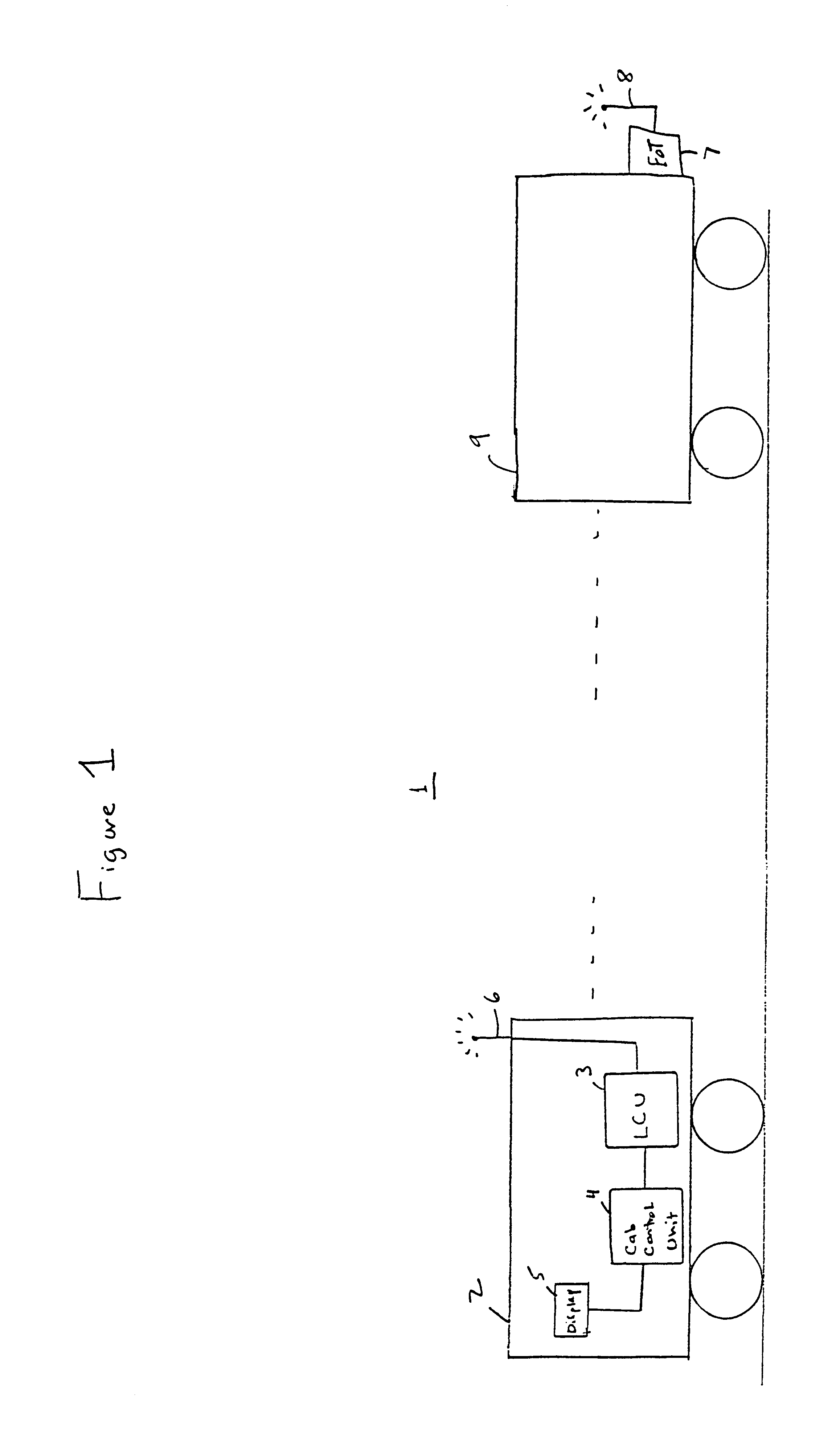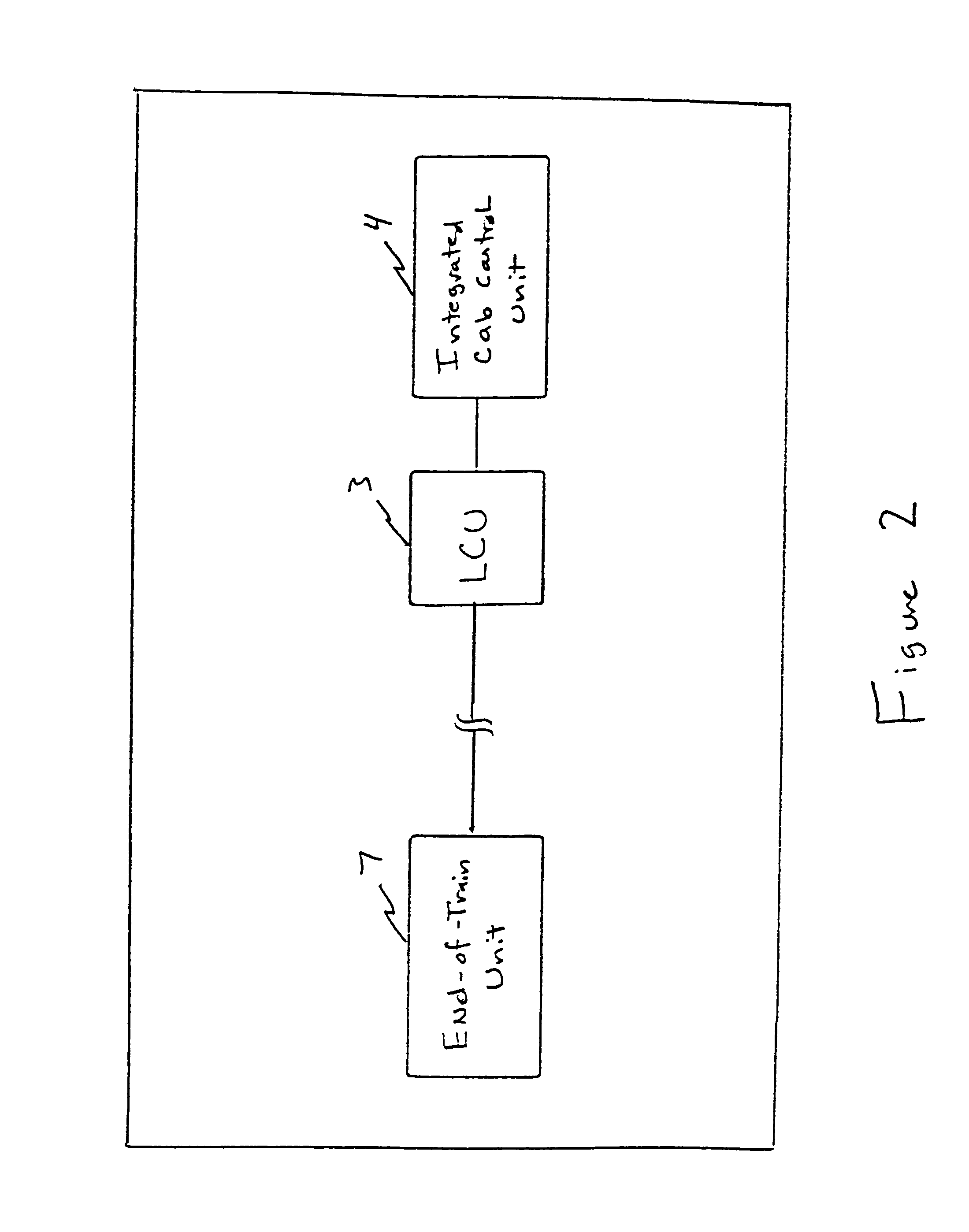Dual-protocol locomotive control system and method
a control system and dual-protocol technology, applied in the field of intratrain communication, can solve the problems of increasing the time and distance required for the train, increasing the possibility of a derailment, and consequently losing life and property
- Summary
- Abstract
- Description
- Claims
- Application Information
AI Technical Summary
Benefits of technology
Problems solved by technology
Method used
Image
Examples
Embodiment Construction
Referring now to the drawings and more particularly to FIG. 1, an intra-train communications system 1 includes, at a leading end, a locomotive 2 equipped with a locomotive control unit 3 in accordance with the present invention, an integrated cab control unit 4, a display 5, and an antenna 6. Integrated cab control unit 4 may include a computer which integrates all of the electrical systems in the locomotive. Computers of this type include the Integrated Function Computer (IFC) manufactured by General Electric and the Rockwell (now Westinghouse Air Brake Company) integrated cab electronics (ICE) unit. Those skilled in the art can appreciate, however, that unit 4 may be any cab control unit conventionally known. Further, while the locomotive control unit 3 is shown as mounted on the lead locomotive, an optional configuration would place this unit on one or more trailing locomotive, if the train is so arranged.
At a trailing end, system 1 includes a unit 7 and an antenna 8 attached to ...
PUM
 Login to View More
Login to View More Abstract
Description
Claims
Application Information
 Login to View More
Login to View More - R&D
- Intellectual Property
- Life Sciences
- Materials
- Tech Scout
- Unparalleled Data Quality
- Higher Quality Content
- 60% Fewer Hallucinations
Browse by: Latest US Patents, China's latest patents, Technical Efficacy Thesaurus, Application Domain, Technology Topic, Popular Technical Reports.
© 2025 PatSnap. All rights reserved.Legal|Privacy policy|Modern Slavery Act Transparency Statement|Sitemap|About US| Contact US: help@patsnap.com



